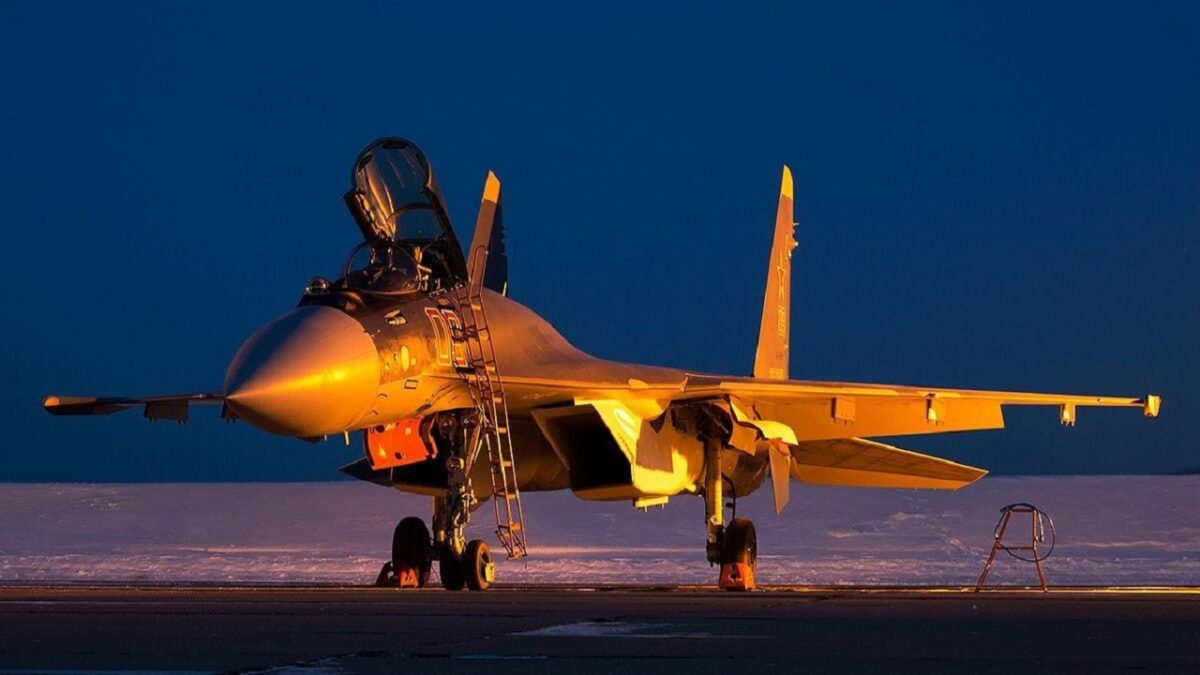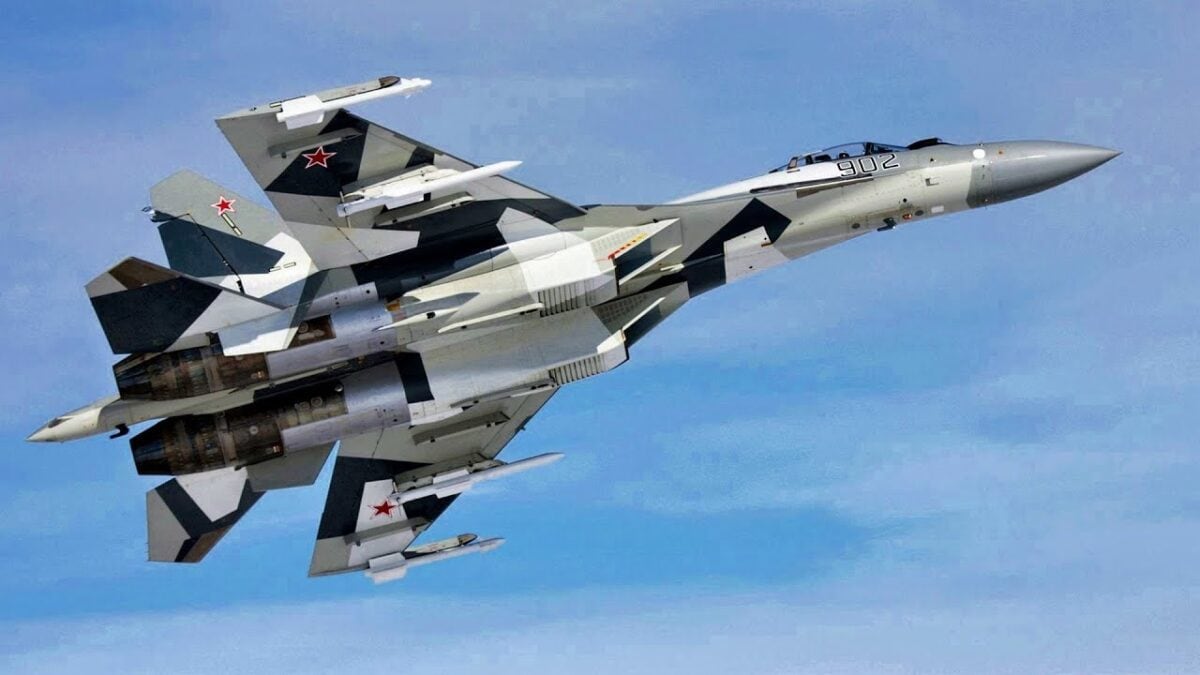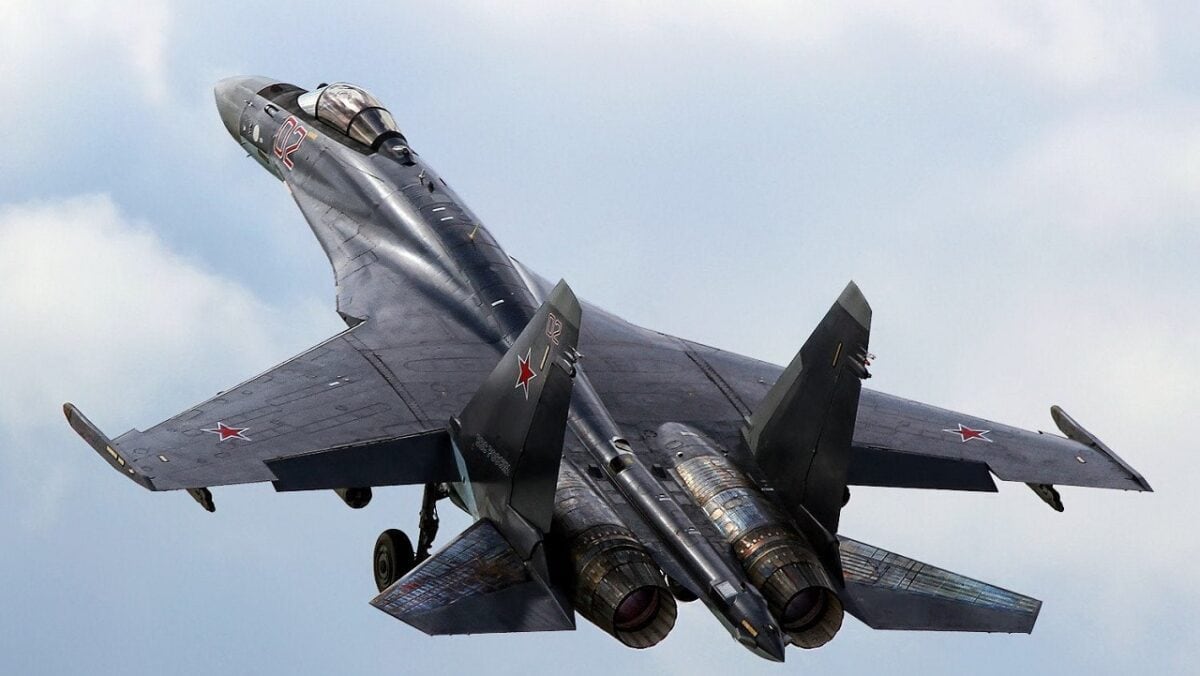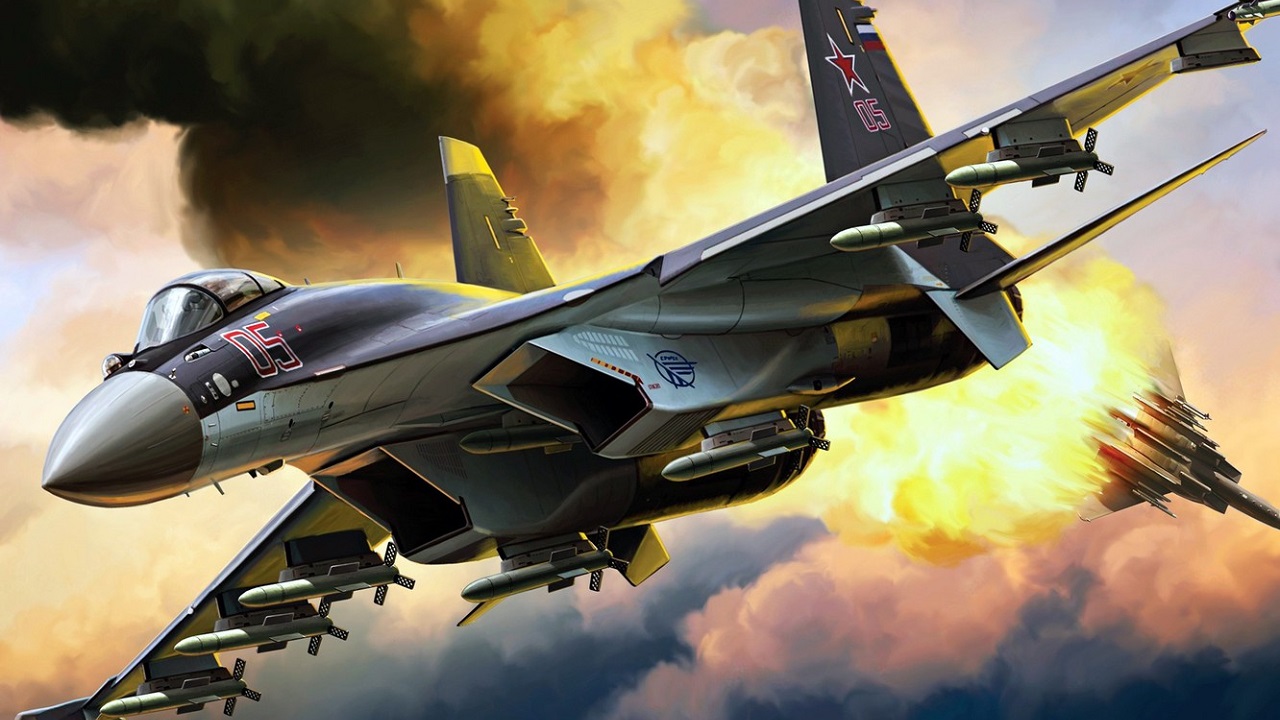Russia’s war in Ukraine is costing Putin a ton of money and ruining his military. And one thing that will never come back perhaps is the reputation of some of Moscow’s best weapons of war. Enter the story of Russia’s Su-35S fighter jet:
Wars are costly – both in human toll and in the actual financial burden. It is doubtful that anyone in the Kremlin would have expected that it would be fighting a ground war in Ukraine six months after it launched its unprovoked invasion. Yet, here we are – and according to recent reports, somewhere around $1 billion worth of Russian aircraft has been lost.
And by “lost” we very much do mean blown out of the sky and destroyed. Multiple sources have reported that among the ruined aircraft that now litter the Ukrainian countryside are the Sukhoi Su-35 (NATO reporting name “Flanker E”), an aircraft that has been widely described as one of the most capable aircraft in Russia’s arsenal – and that was once seen as more than a match for the F-15 Eagle, the F/A-18, and even the F-35 Lightning II.
It seems that the rumors of its capabilities were “greatly exaggerated,” to put it bluntly.
For its part, Ukraine had previously announced a Su-35S was shot down during an aerial dogfight over the Kherson region on May 27. That was less than two months after another Su-35S had been downed by Ukrainian air defenses near the Kharkiv region in early April.
Su-35S Reputation Ruined
The Sukhoi Su-35S is a fourth-generation “++” aircraft that was designed with some fifth-generation technologies. The Flanker-E, which is essentially the second improved version of the Su-27M, is single-seat, twin-engine, supermaneuverable aircraft that was originally designed for an air superiority role, but it could also be utilized as a ground-attack aircraft.
The Flanker-E, which features thrust-vectoring engines in place of the Su-27’s canards, was also developed to gain air supremacy by destroying manned and unmanned aerial vehicles with guided missiles at long, medium, and short ranges while conducting long-range and short-range combat maneuvers
According to United Aircraft Corporation (UAC), the Su-35S’s manufacturer, the fighter “combines the qualities of a modern fighter (super-maneuverability, superior active and passive acquisition aids, high supersonic speed and long range, capability of managing battle group actions, etc.) and a good tactical airplane (wide range of weapons that can be carried, modern multi-channel electronic warfare system, reduced radar signature, and high combat survivability).”
Its twin Saturn AL-41F1S turbofans provide the Su-35 with maneuverability that UAC claims can easily match or exceed the evasion techniques of nearly all existing fourth-generation fighters. With a maximum speed of 1,550 mph and a ceiling of 59,050 feet, it is speedy and high-flying aircraft.
The Su-35’s armament reportedly includes a GSh-30-1 30mm autocannon with 150 rounds, along with 17,630 pounds of payload on 12 external points. It can carry a variety of air-to-air, air-to-surface, anti-radiation, and anti-ship missiles, as well as a number of TV, laser-, and satellite-guided bombs.
It is equipped with an Irbis phased-array radar control system which enables the aircraft to detect quickly and track simultaneously up to four ground targets or up to 30 airborne targets, while it can also engage up to eight airborne targets at the same time. In addition, the radar control system has the friend-or-foe identification capability for aerial and maritime objects and is also capable of identifying the class and type of airborne targets and taking aerial photos of the ground.
In theory, those capabilities would make for a competent aircraft, but it has failed to live up to the hype, as noted by some two dozen that have been destroyed.
Of course, any aircraft is only as good as the pilots, which could be part of the issue. Russia’s pilots simply lack the training to take on near-peer adversaries, resulting in downed warbirds.

Russian Air Force Su-35. Image Credit: Creative Commons.

Russian Su-35 fighter jet. Image Credit: Creative Commons.

Su-35 fighter. Image Credit: Creative Commons.
Perhaps this is why Russia has limited deploying even more advanced aircraft such as the Su-57 – and there is little reason to believe it would be doing any better in the skies over Ukraine.
Expert Biography: A Senior Editor for 1945, Peter Suciu is a Michigan-based writer who has contributed to more than four dozen magazines, newspapers, and websites with over 3,000 published pieces over a twenty-year career in journalism. He regularly writes about military hardware, firearms history, cybersecurity, and international affairs. Peter is also a Contributing Writer for Forbes.

